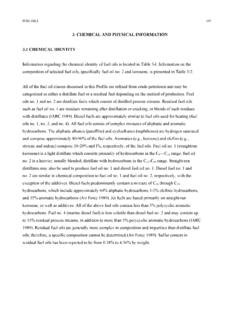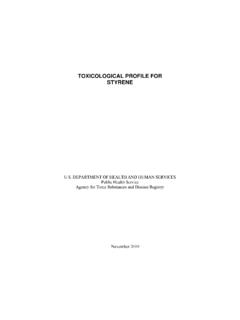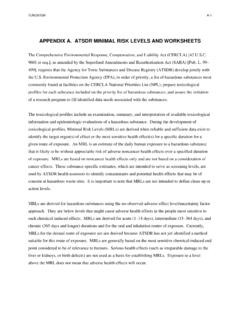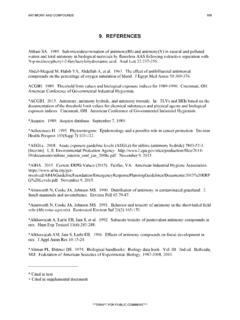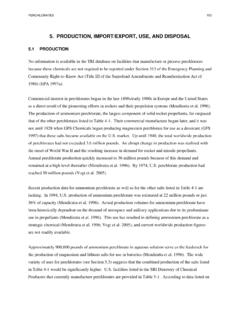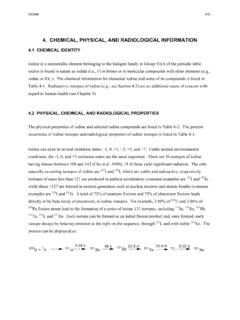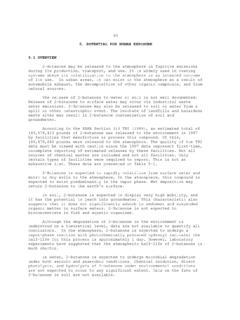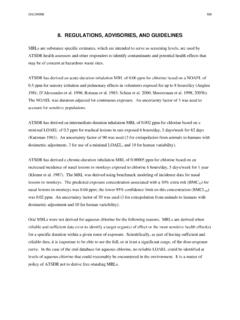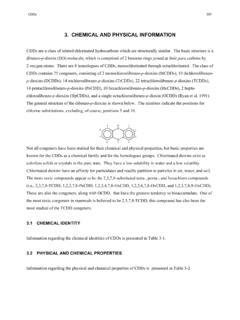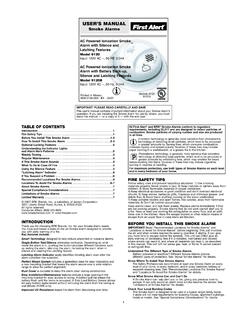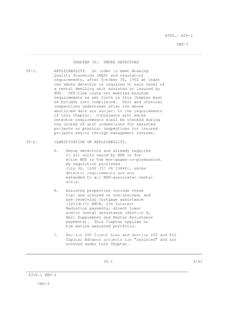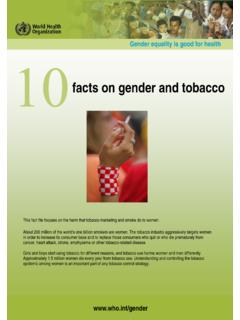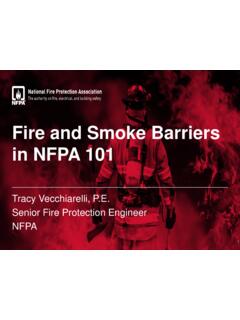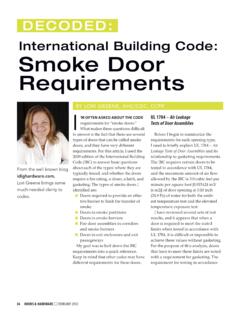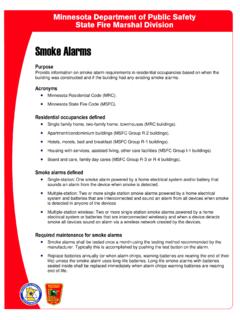Transcription of Creosote Health Effects - Agency for Toxic Substances and ...
1 The name Creosote Creosote is a name used for several different products. In this fact sheet, the name Creosote will be used specifically to talk about coal tar Creosote since this is the type of Creosote normally used in wood preserving Creosote is Creosote is a mixture of hundreds of chemicals. A mixture is Substances , like water and salt, staying together by physical forces. The major chemicals in coal tar Creosote are polycyclic aromatic hydrocarbons (PAHs), phenol, and creosols. Creosote is a thick and oily liquid. It is easily set on fire. Its color is usually amber to black. Creosote is the most common product utilized to preserve wood in United States. Creosote is also a pesticide. A pesticide is a substance that kills pests. People need to be trained and certified to use Creosote to preserve wood and as a Creosote enters the environmentCreosote that is in the environment has usually been released from industries that preserve wood.
2 Creosote can be released into soil and water and can then move through the soil to groundwater. Groundwater is water found underground in cracks and spaces in soil, sand, and rocks. After Creosote gets into groundwater, it may take many years to break Health107462 OverviewThis fact sheet was developed by the Agency for Toxic Substances and disease registry (ATSDR), as requested by community members potentially affected by the Former Kerr McGee (Tronox) talks about: what Creosote is, what happens when Creosote enters the environment, Health Effects associated with Creosote , and how people can avoid or minimize contact with is ATSDR?The Agency for Toxic Substances and disease registry (ATSDR) is the federal public Health Agency whose mission is to prevent adverse human Health Effects that result from hazardous waste exposure. The Agency conducts assessments or evaluations to determine whether communities have been exposed to hazardous waste, and then provides Health information to prevent harmful exposures and related diseases.
3 Former Kerr McGee (Tronox) FacilityCreosote Health EffectsATSDR - Former Kerr McGee (Tronox) FacilityNovember 2006 The chemicals in Creosote can enter the air and can also build up in plants and animals such as snails, shellfish, and a person can be exposed to creosoteYou are exposed to Creosote only by coming in contact with it. People may be exposed to Creosote by: working in a wood preserving facility,- Workers in wood preserving facilities might be exposed to higher levels of Creosote than the general population. living close to a wood preserving facility if the facility discharged Creosote into the air or onto the ground,- The most common way that Creosote in soil enters the body is through the skin. accidentally eating soil contaminated with Creosote ,- For example, children playing in areas with soil contaminated with Creosote can swallow the Creosote if they put their hands in their mouth after touching the soil.
4 Using wood treated with Creosote to build fences, bridges, railroad tracks, or installing telephone poles, living in houses made of wood treated with Creosote , drinking water contaminated with Creosote , or eating some food, like fish and shellfish, contaminated with Creosote exposure will make you sickWhether a person exposed to Creosote gets sick or not will depend on several things, including the level (amount) to which a person was exposed, the duration (length of time), and frequency (number of times) of , some groups might be more sensitive to Creosote than others, for example, children, the elderly and pregnant - Creosote Health EffectsHealth problems caused by Creosote exposure Longer exposure to Creosote vapors can irritate the lungs. Exposure to small amounts of Creosote over time by direct skin contact or by contact with Creosote vapors, may cause:- Blistering, peeling, or reddening of the skin- Damage to the eyes- Increased sensitivity to sunlight Eating food or drinking water with large amounts of Creosote may cause:- Burning in the mouth and throat - Stomach pains Accidentally eating large amounts of Creosote for a short period of time can cause:- Bad skin rash- Eye burns- Convulsions- Kidney or liver problems- Unconsciousness or deathHow Creosote can affect childrenNot many studies exist on Health Effects of Creosote in children.
5 Generally, researchers have found that children who play with Creosote -contaminated soil tend to get more skin rashes than other , some studies with laboratory animals suggest that Creosote exposure can cause birth defects, such as cleft palate (when the roof of the mouth is not fully closed), among babies born to mothers exposed to high levels of Creosote during pregnancy. Other studies have shown that Creosote may cross the placenta, getting into the tissue of the , since these studies are done with animals, scientists do not know for sure if Creosote could actually cause these Health Effects in of Creosote to cause cancerThe Environmental Protection Agency (EPA) has determined that coal tar Creosote is a probable human carcinogen. Long-term exposure, especially thorough direct contact with skin during wood treatment or manufacture of coal tar Creosote -treated products, to low levels of Creosote has resulted in skin cancer and cancer of the scrotum.
6 Cancer of the scrotum in chimney sweeps has been associated with long-term skin exposure to soot and coal tar families can protect their healthIf you and your family live close to a wood preserving facility, follow these recommendations: Adults and children should avoid:- areas inside the wood preserving facility- fenced facility areas- areas with signs explaining that people should not enter- contaminated or abandoned areas- areas undergoing cleanup- drainage ditches- soil contaminated with creosoteIf Creosote is used in your job, wash your work clothes apart from other household people for Creosote exposureAs mentioned before, Creosote consists of many chemicals. Medical tests can detect these chemicals in body tissues such as organs, muscle, and fat. Urine tests are commonly done for employees in industries that work with coal tar , these tests cannot determine whether these chemicals actually came from Creosote and for how long they may have been present in the are a group of chemicals.
7 Some are found in nature. Others are man-made. Exposure to cresols occurs mainly from breathing air containing car exhaust, breathing air from homes heated with coal or wood and smoking is a man-made substance . It is found in many consumer products, like nylon. Polycyclic aromatic hydrocarbons (PAHs)PAHs are usually produced by burning fossil fuel. Some products like coal, tar, petroleum, and tobacco smoke , have more informationPlease call the Agency for Toxic Substances and disease registry toll-free at 1-800-CDC-INFO and ask for Loretta Bush at extension 1742. ATSDR - Creosote Health EffectsDepartment of Health and Human ServicesAgency for Toxic Substances and disease registry
